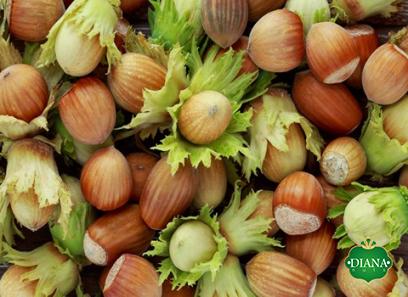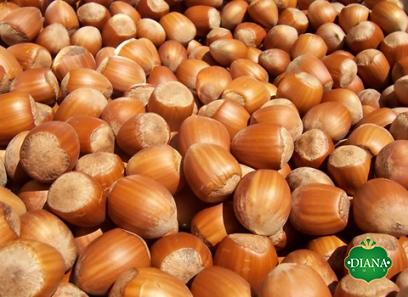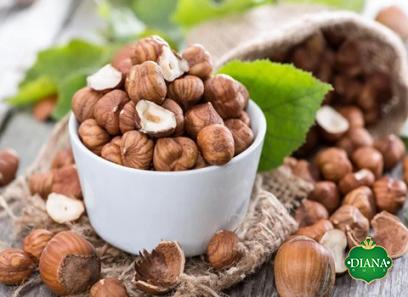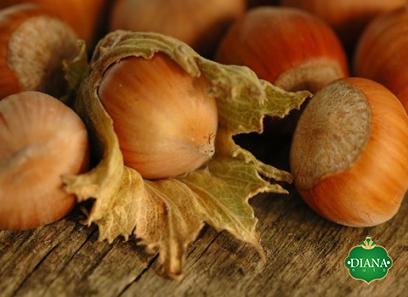Which is the Superior Choice for Your Business? Hazelnuts are a popular choice when it comes to incorporating nuts into various food products or even as standalone snacks. They offer a delectable earthy flavor and a satisfying crunch. However, when it comes to deciding between raw and roasted hazelnuts, businesses must weigh the advantages and disadvantages of each variant. In this article, we will explore the differences between raw and roasted hazelnuts, helping you make an informed decision for your business. Raw Hazelnuts: Raw hazelnuts are natural and unprocessed, making them the closest to the nut’s original form.

.
 They are harvested from hazel trees, then shelled, leaving the inner kernel intact. These nuts have a mild, slightly sweet flavor with a soft texture. Businesses that emphasize offering natural and unaltered products may lean towards incorporating raw hazelnuts into their offerings. One of the key advantages of raw hazelnuts is their health benefits. Raw nuts retain their natural oils, providing a rich source of heart-healthy fats and essential nutrients. They are also low in sodium and have no added oils, sugars, or preservatives. Furthermore, raw hazelnuts contain high levels of vitamin E, which acts as an antioxidant, promoting healthy skin and providing protection against certain diseases.
They are harvested from hazel trees, then shelled, leaving the inner kernel intact. These nuts have a mild, slightly sweet flavor with a soft texture. Businesses that emphasize offering natural and unaltered products may lean towards incorporating raw hazelnuts into their offerings. One of the key advantages of raw hazelnuts is their health benefits. Raw nuts retain their natural oils, providing a rich source of heart-healthy fats and essential nutrients. They are also low in sodium and have no added oils, sugars, or preservatives. Furthermore, raw hazelnuts contain high levels of vitamin E, which acts as an antioxidant, promoting healthy skin and providing protection against certain diseases.
..
 Roasted Hazelnuts: Roasted hazelnuts undergo a process of baking in high heat, which intensifies their flavor and alters their texture. The roasting process involves exposing the nuts to temperatures that range from 275 to 300 degrees Fahrenheit, allowing the natural oils to surface and enhance the nut’s taste. Roasted hazelnuts are popular due to their more robust and pronounced flavor profile. One significant advantage of roasted hazelnuts for businesses is the enhanced taste and aroma they bring to products. The roasting process intensifies the nut’s natural flavors, offering a savory and smoky dimension. This makes them an excellent choice for bakery items, confectionery, or nut butter production where a bold and distinct taste is desired. While roasted hazelnuts can be a delight for the taste buds, it is important to note that the roasting process does alter some of their nutritional composition.
Roasted Hazelnuts: Roasted hazelnuts undergo a process of baking in high heat, which intensifies their flavor and alters their texture. The roasting process involves exposing the nuts to temperatures that range from 275 to 300 degrees Fahrenheit, allowing the natural oils to surface and enhance the nut’s taste. Roasted hazelnuts are popular due to their more robust and pronounced flavor profile. One significant advantage of roasted hazelnuts for businesses is the enhanced taste and aroma they bring to products. The roasting process intensifies the nut’s natural flavors, offering a savory and smoky dimension. This makes them an excellent choice for bakery items, confectionery, or nut butter production where a bold and distinct taste is desired. While roasted hazelnuts can be a delight for the taste buds, it is important to note that the roasting process does alter some of their nutritional composition.
…
 The high heat exposure can degrade certain nutrients, including vitamin E and antioxidants. Additionally, roasted hazelnuts often require the addition of oil or salt during the roasting process, which can increase their calorie, fat, and sodium content. Businesses aiming to promote a healthier product line may prefer to minimize these additions or choose raw hazelnuts instead. Conclusion: The choice between raw and roasted hazelnuts ultimately depends on your business’s specific needs and target market. Raw hazelnuts offer natural purity and health benefits, while roasted hazelnuts provide a rich, bold flavor. Understanding the differences and advantages of each option will help you make an informed decision about which type of hazelnuts to incorporate into your product line. Whether you opt for raw or roasted hazelnuts, it is essential to ensure that you source high-quality nuts from reliable suppliers. This will guarantee freshness and superior taste in your final creations. By considering the preferences of your target audience and aligning your product offerings with your business goals, you can bring the deliciousness of hazelnuts to your customers while maximizing the success of your business ventures.
The high heat exposure can degrade certain nutrients, including vitamin E and antioxidants. Additionally, roasted hazelnuts often require the addition of oil or salt during the roasting process, which can increase their calorie, fat, and sodium content. Businesses aiming to promote a healthier product line may prefer to minimize these additions or choose raw hazelnuts instead. Conclusion: The choice between raw and roasted hazelnuts ultimately depends on your business’s specific needs and target market. Raw hazelnuts offer natural purity and health benefits, while roasted hazelnuts provide a rich, bold flavor. Understanding the differences and advantages of each option will help you make an informed decision about which type of hazelnuts to incorporate into your product line. Whether you opt for raw or roasted hazelnuts, it is essential to ensure that you source high-quality nuts from reliable suppliers. This will guarantee freshness and superior taste in your final creations. By considering the preferences of your target audience and aligning your product offerings with your business goals, you can bring the deliciousness of hazelnuts to your customers while maximizing the success of your business ventures.










Your comment submitted.